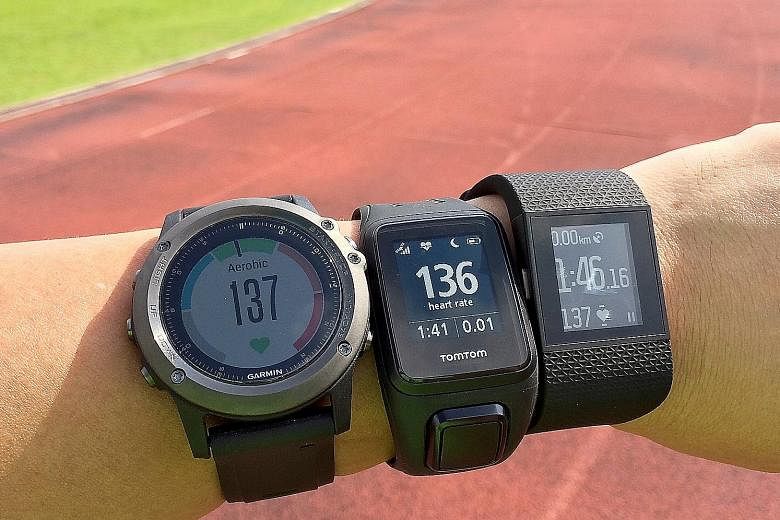Singaporeans have become increasingly sedentary. In 2013, one in four Singaporeans between the ages of 18 and 69 did not have sufficient physical activity, up from one in five in 2007, according to the Health Promotion Board (HPB).
But how much - and how hard - should you exercise?
To stay healthy and prevent diseases, the American College of Sports Medicine and HPB recommend at least 150 minutes a week of moderate physical activities. This can be met through 30 to 60 minutes of moderate-intensity exercise (five days a week), or 20 to 60 minutes of vigorous-intensity exercise (three days a week).
To understand what "moderate" or "vigorous" means, it is important to understand the concept of target heart-rate zones for exercise.
To start, subtract your age from 220 to get your maximum heart rate. If you are 30, that would be 190 beats per minute.
The moderate-intensity zone covers 50 to 70 per cent of your maximum heart rate, while vigorous-intensity is 70 to 85 per cent. This means, if you are 30, you should be keeping your heart rate during exercise to under 133 beats per minute - if you are aiming to be in the moderate zone. And it shoud be less than 162 beats per minute for the vigorous zone.
-
How we test
-
The Straits Times puts three GPS running watches with wrist-based HRM through their paces.
We tested them over several jogging sessions on a 400m stadium track, as well as on the streets of an HDB estate to see if buildings and trees would cause a loss in GPS signals.
A Wahoo Fitness Blue chest strap HRM provides a check against the watches' readings.
To measure your heart rate during a physical activity like jogging, you can get a GPS running watch that comes with a chest strap heart-rate monitor (HRM). It works by detecting electrical activity transmitted by heart muscles.
"Heart rate monitors allow us to monitor exercises at the right intensity for more effective results and for safety reasons, by not over exerting ourselves," said Mr Ray Loh, exercise physiologist at Tan Tock Seng Hospital's Sports Medicine and Surgery Clinic.
He explained that under-exertion during training reduces training outcomes, while over-exertion increases fatigue level, affects recovery and risks injury.
The latest GPS running watches come with wrist-based optical HRM. It works by using optical light sensors to read the blood flow changes in the capillaries on your wrist. Such watches are starting to supplant those that use chest-strap HRMs.
"A chest-strap HRM is definitely much more uncomfortable and does not fit as well as a simple watch," said public relations executive Geraldine Soh, 25.
A Maastricht University study in 2011 found that wrist-based optical HRM has no significant difference in readings compared with a chest-strap HRM.
The study noted that "the absence of a belt makes optical HRM less obtrusive than a chest-strap device".
"Comfort is one key reason and the other is one item fewer to carry around," said actor and emceeBobby Tonelli, 40, who uses a TomTom Spark Cardio.
Having worn both wrist-based HRM and a chest-strap HRM, Mr Tonelli found that both types of devices yield similar heart-rate readings.
"Within a few years, chest strap HRMs will probably become obsolete, as the wearable technology is improving rapidly," he said.


